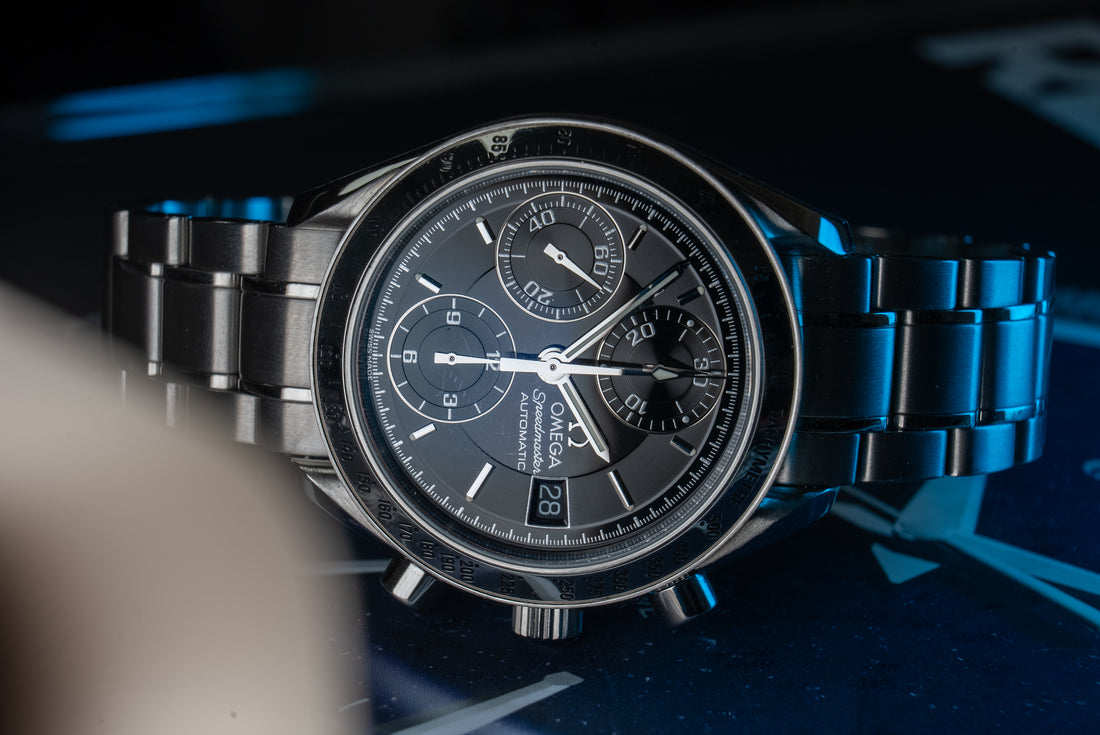

Omega takes timekeeping from a necessity to an art. Since the mid-19th century, it has been worn on the wrists of astronauts to style icons.
The brand’s long-standing success and impeccable reputation have made it a target of the counterfeit market, with fakes popping up just about everywhere. And that’s a problem. Because you might think you just found the deal of a lifetime, but it could turn out to be a very expensive lesson instead. Learn how to authenticate your Omega watch to make sure you don’t get hit with a fake. Your collection deserves the beauty and craftsmanship that only a true Omega can offer.
There’s now a thriving market for replica Rolex watches, and counterfeiters are pouring more money into making better fakes. The key problem? You can’t always spot a fake Rolex just by looking at it. Buying a watch is a considerably emotional and time-consuming investment. If you’re in the market for a new or used Rolex, imagine how devastated you’d be if it turned out to be ingenuine.
This guide covers how to authenticate a Rolex, so you can be sure you’re not adding a dud to your collection.
Some easy Omega authenticity checks
Counterfeiters have gotten pretty good at replicating Omega watches over the years. At first glance, a fake Omega can seem genuine.
But when you know how to look past the surface-level beauty, you can spot telltale signs of a counterfeit watch. Hold the timepiece in your hand and work through the visual ways to know how to authenticate an Omega watch.
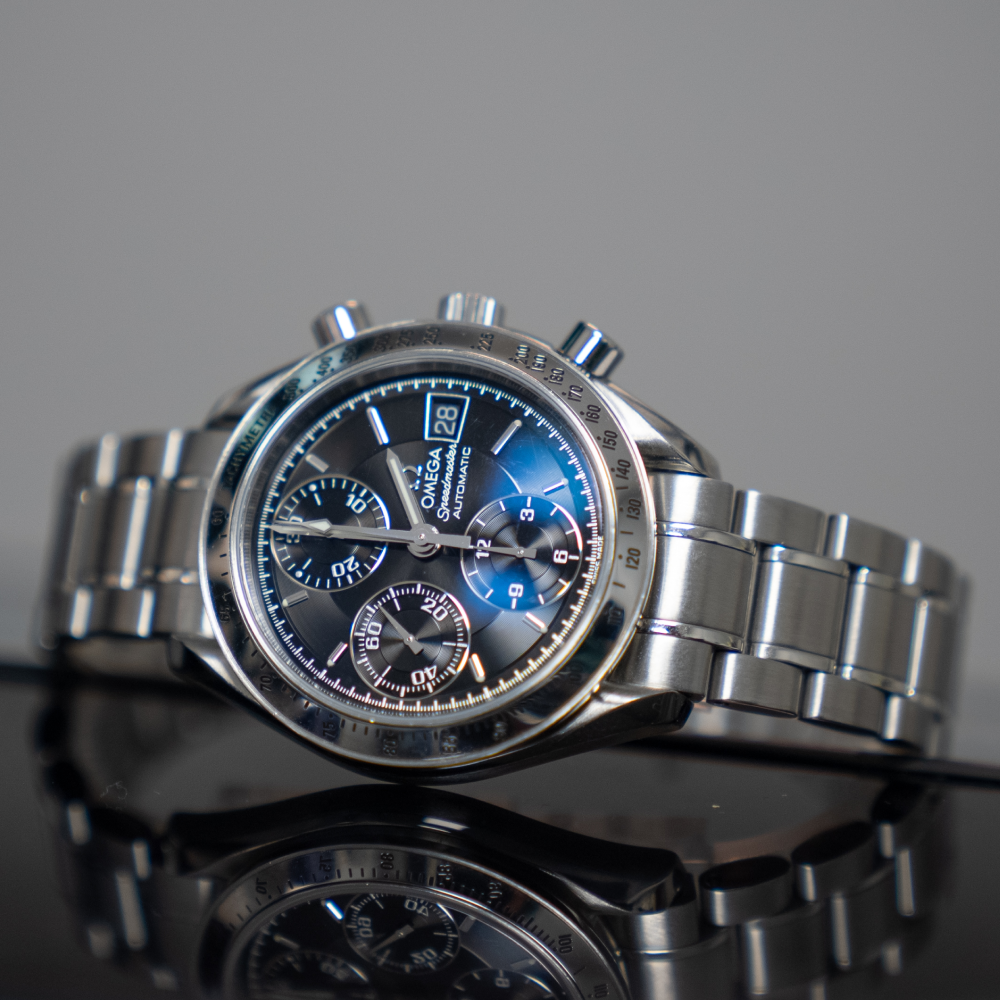
STEP 1
The dial
Lazy or unskilled counterfeiters often come to light in the dial. Look for spelling errors and inconsistencies in spacing and markings.
Omega is precise in every aspect of its design; every dial is flawless. Look for details that appear amateur, or are painted instead of engraved.
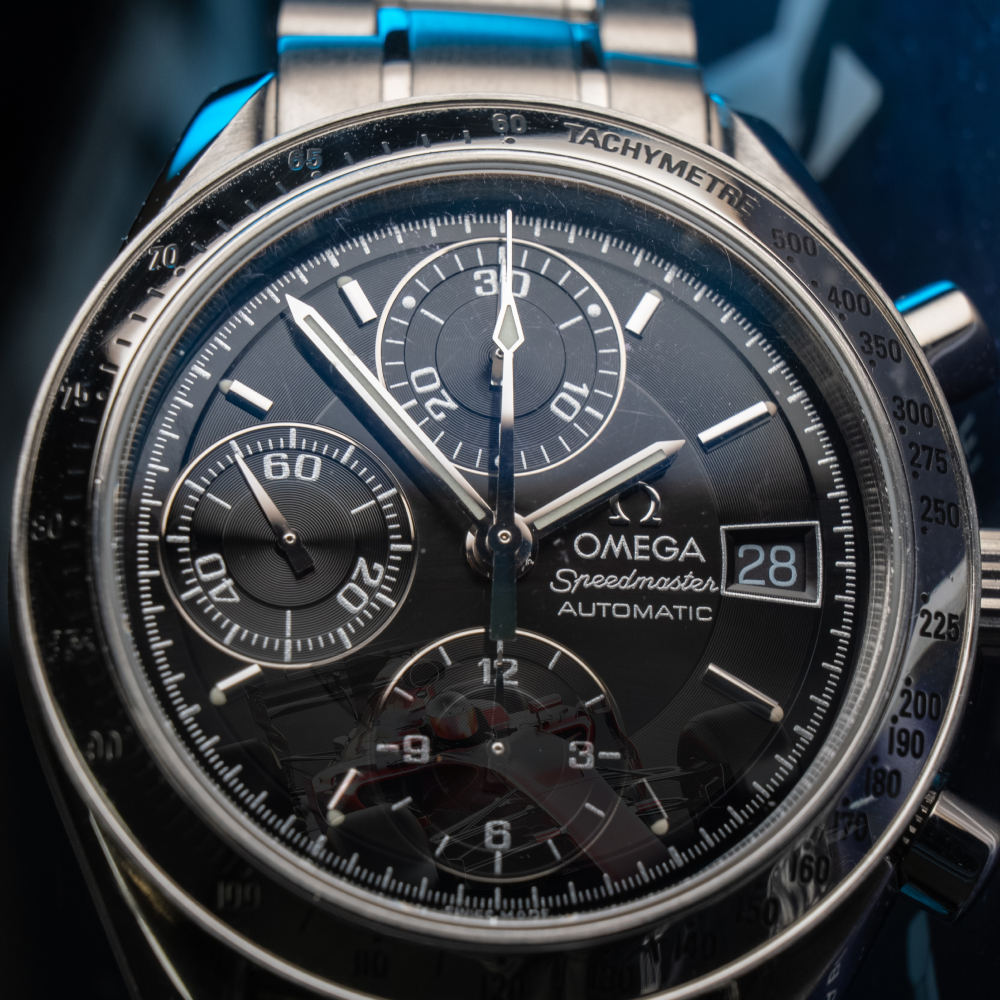
STEP 2
The logo
The Omega logo is simple yet iconic.
You can usually spot a fake Omega by the logo. Does it appear too thick or off-centre? Most people in the counterfeit space paint on the logo, rather than engraving or embedding it.
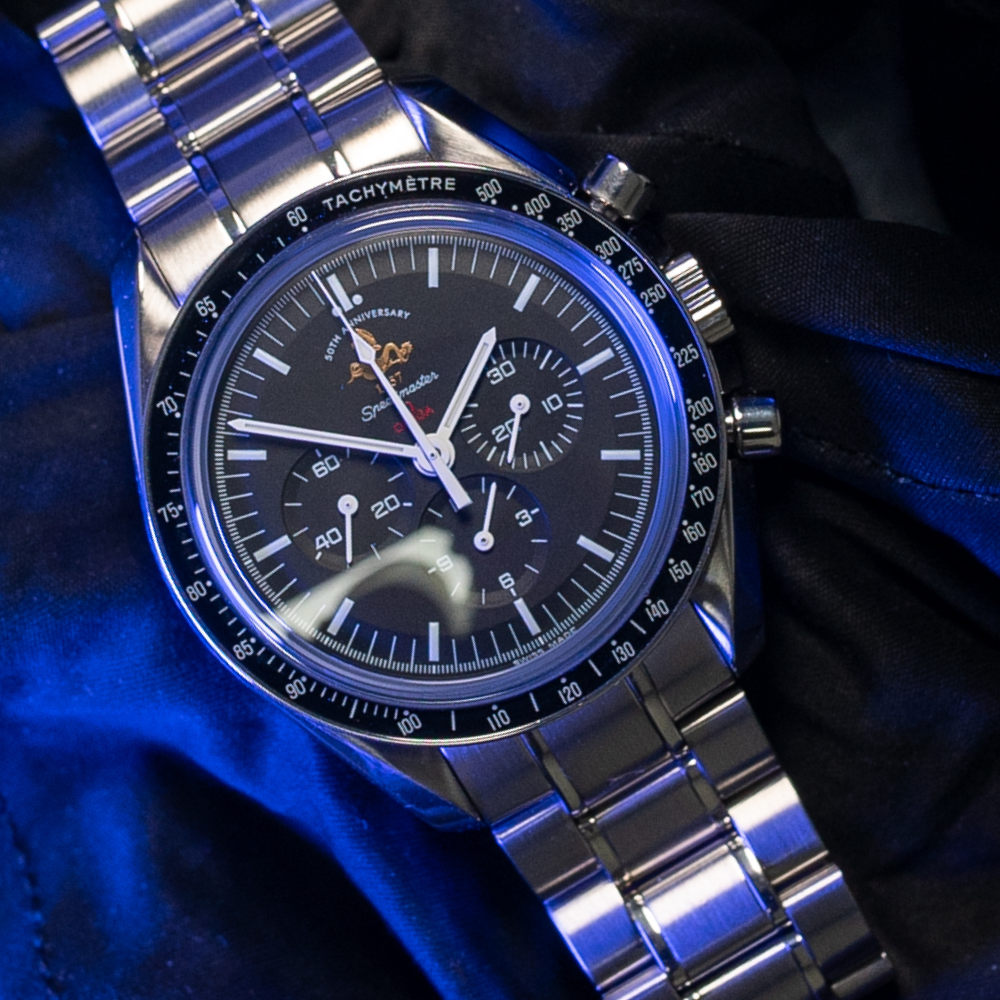
STEP 3
The hands
The second hand of a genuine Omega moves steadily, consistently and with precision. There’s a certain smoothness and silence that comes with a long heritage of sophisticated craftsmanship.
If the second hand ticks loudly or demonstrates a jagged movement, the watch in your hand is probably fake.
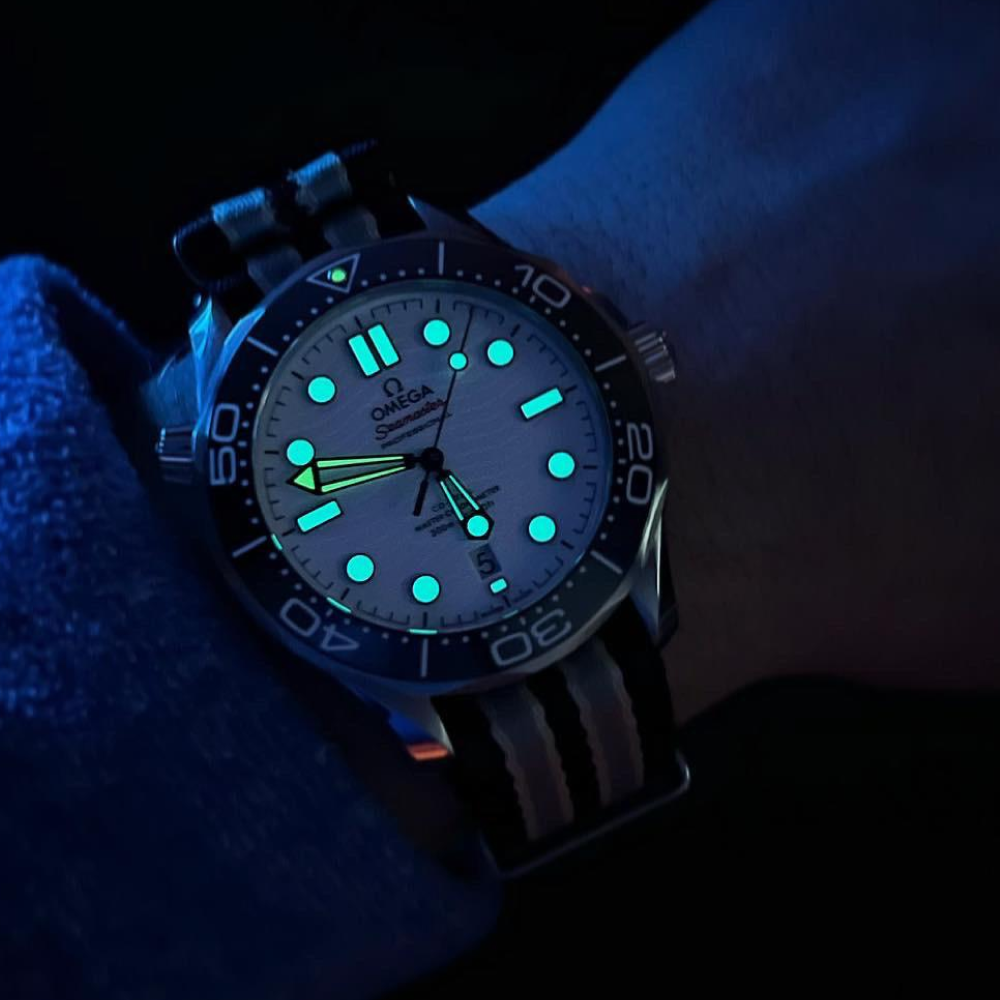
STEP 4
The lumes
Omega’s diving watches are equipped with luminescent markings and hands, for a reliable glow even in the depths of the ocean. Fake Omegas, by comparison, could never shine as brightly.
Counterfeit watches tend to swap bold, unmistakable lumes for thin lines. Test your watch’s luminosity by placing it under a bright light for 15 minutes and then moving it to a dark space.
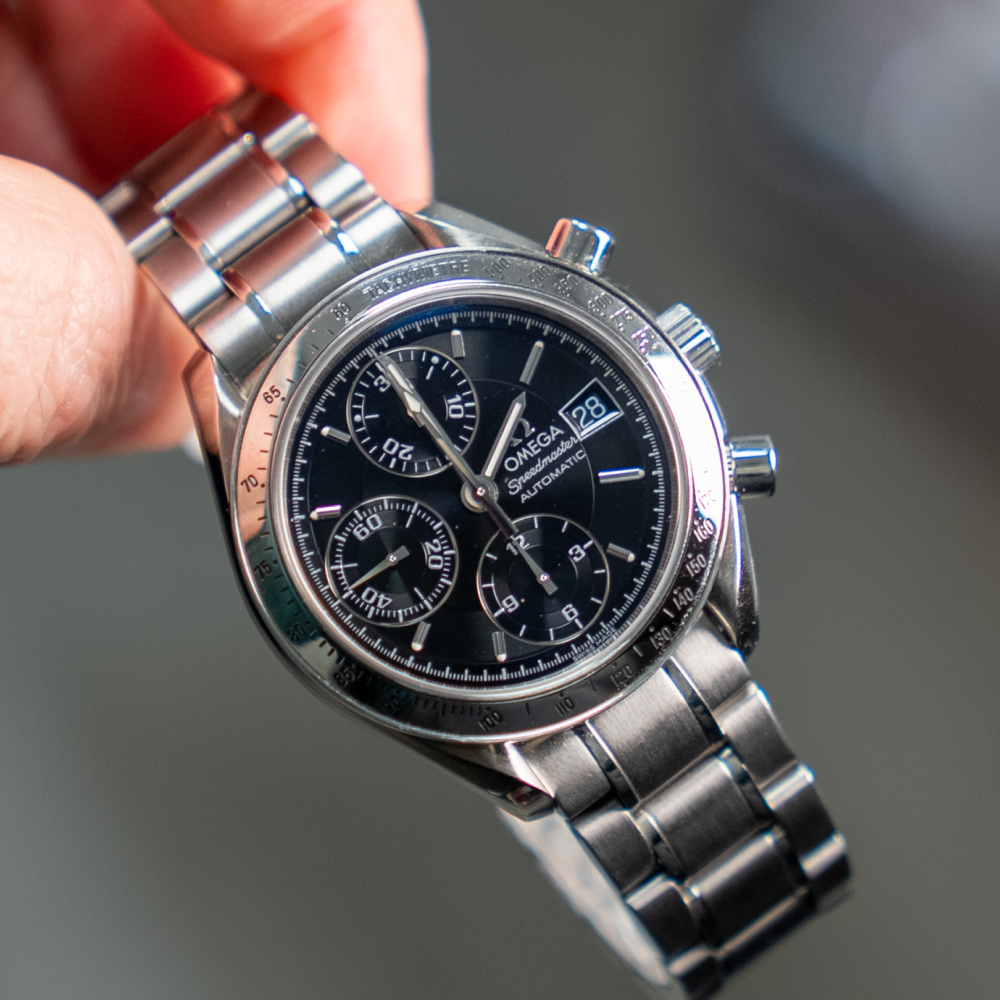
STEP 5
The case
Every authentic Omega case is made with the highest quality materials that give the watch a certain weight.
Look out for engravings and serial numbers on the case back (we’ll cover this in more detail in the next section!) and ensure they meet Omega’s precision standards.
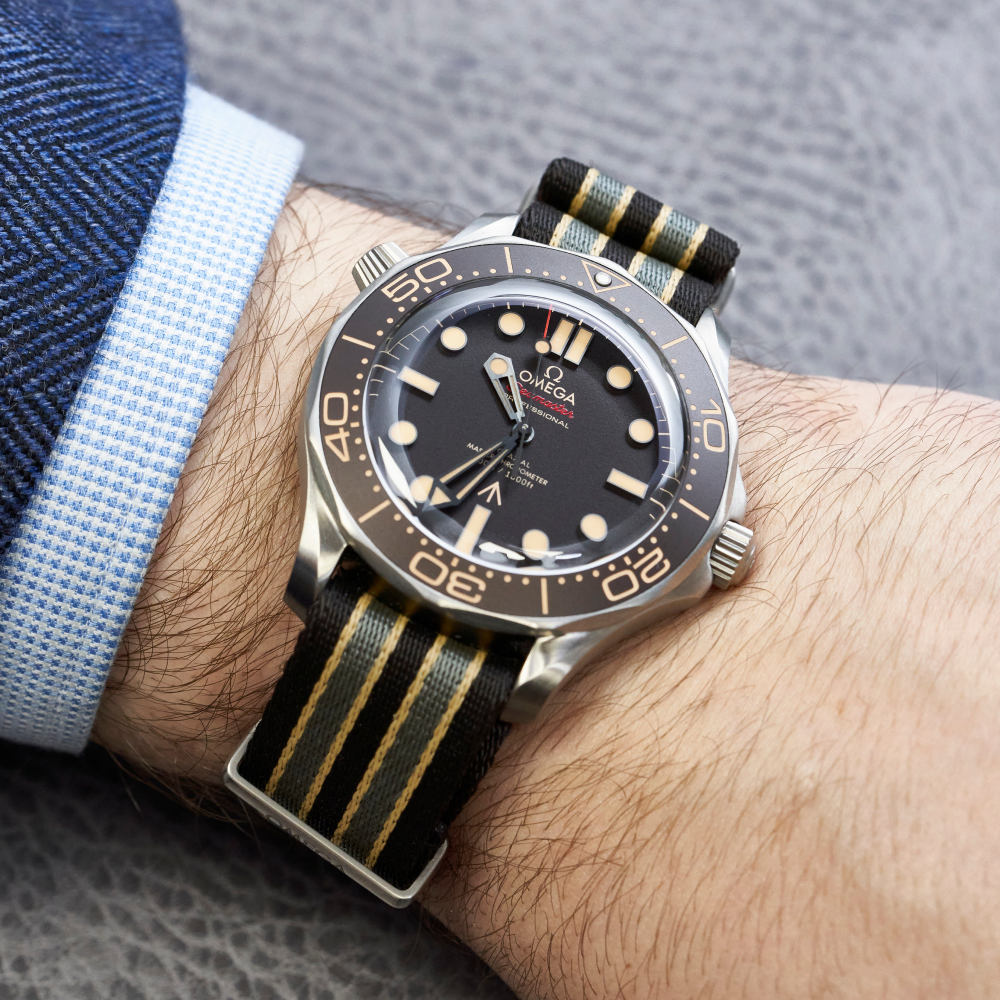
STEP 6
The bracelet or strap
The material and design of your bracelet or strap should reflect only the best of Swiss craftsmanship.
Look for a perfectly engraved logo on the clasp and pay extra attention to the finish. It should reflect Omega’s commitment to excellence.
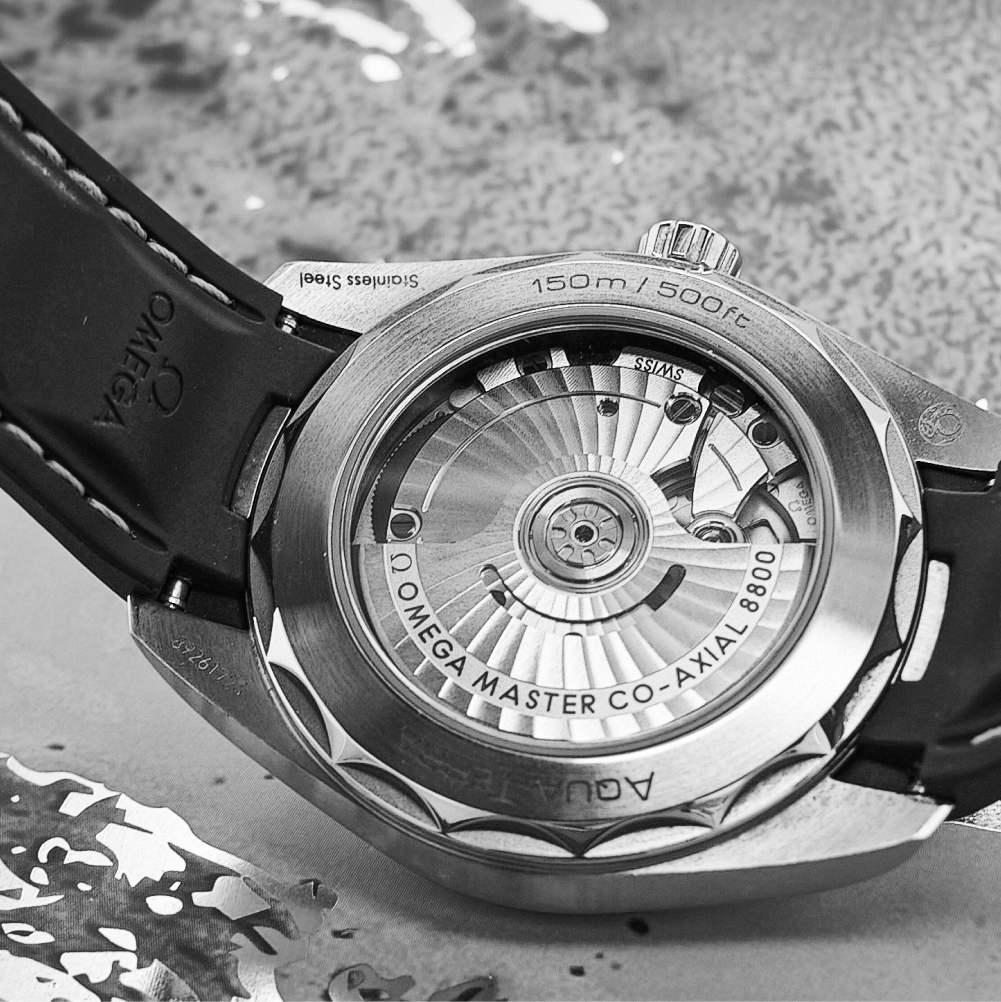
STEP 7
The movement
The engine that powers the watch is one of the hardest elements to replicate.
The design and technology of the movement are central to checking your Omega’s authenticity. Higher-end fake watches might include a movement that looks convincing, but when examining it through an open case back, it spins the rotor out of the way. It’s incredibly difficult for counterfeiters to replicate brand-specific technology, like that used in movements.
This is a more advanced Omega authenticity check, so we recommend leaving it to a professional, like Trilogy.
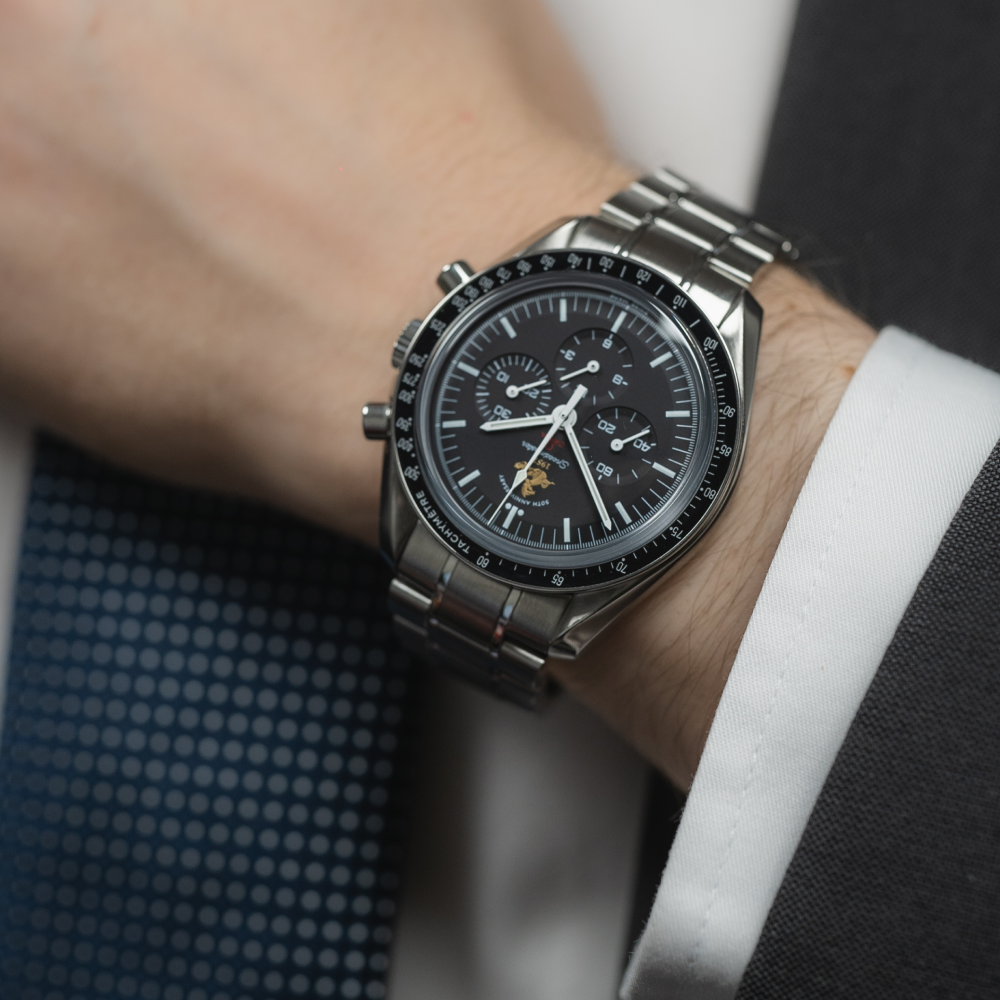
STEP 8
The magnet check
If your watch is categorised as a certified Master Chronometer, it won’t be affected by magnetic fields.
For an easy Omega authenticity check, place a magnet next to the timepiece. Fake watches will stop ticking, while genuine pieces will continue functioning as normal.
How to check your Omega serial number
The serial number on an Omega watch is etched onto the backside of one of its lugs, indicating the watch’s production year and model series. It’s a 7 or 8-digit number in a small, engraved print. On vintage Omega models, you’ll find the serial number on the inside of the caseback and on the movement.
If your Omega came with the box and papers, you can check that the numbers match. This is a good indication of an authentic Omega, but you should also double-check the quality and consistency in the formatting of the engraving.
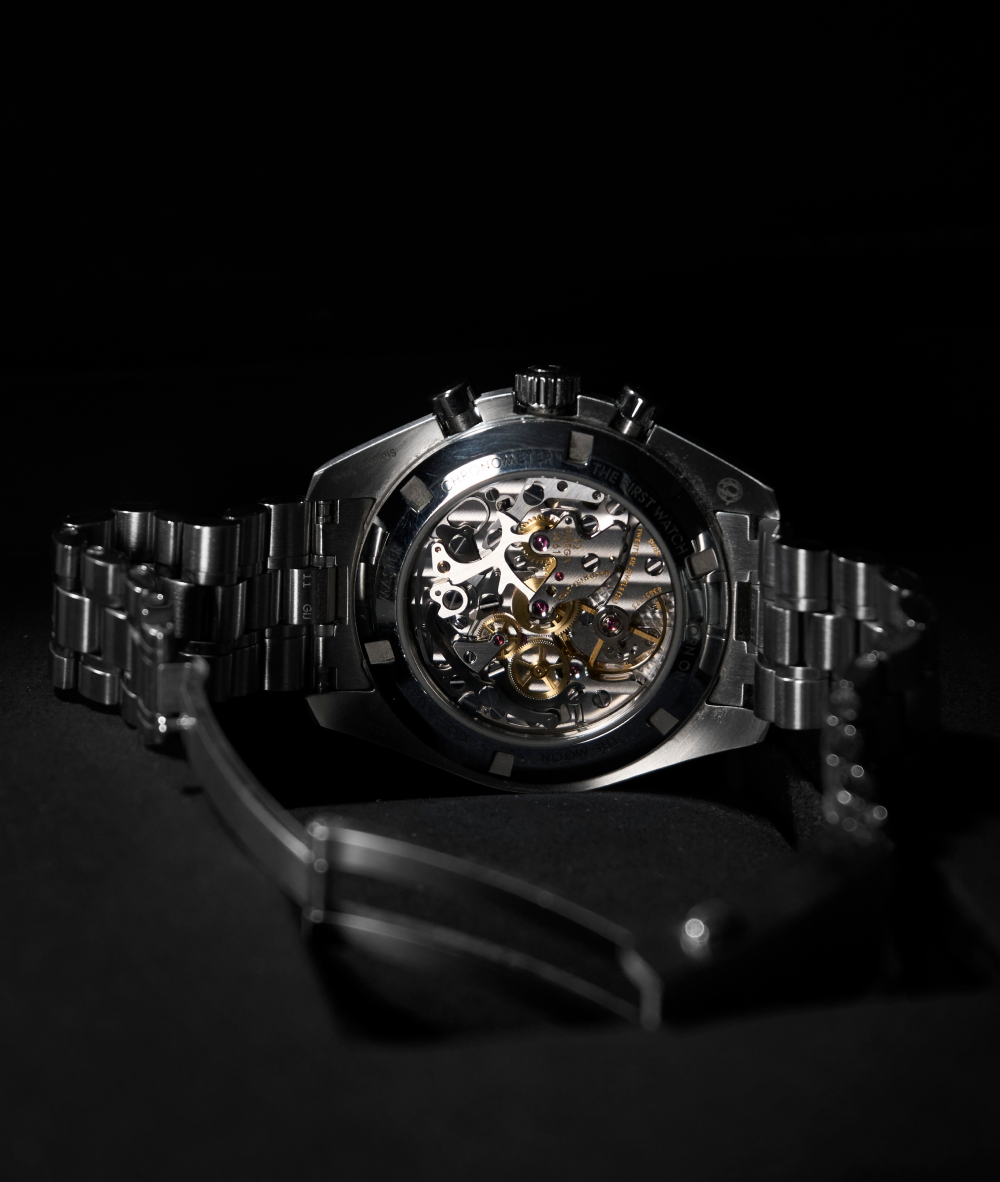
How to spot a fake Omega Seamaster
You can spot a fake Omega Seamaster by following the authenticity checks covered in this guide.
Compare the dial, bezel and hands to genuine Omega specifications. Examine the quality of all materials, and check the serial number to ensure it’s genuine.
A close inspection of the dial should reveal glossy hands and markers that look almost as if they’ve come from sapphires. The lume is bright and bold, and you should notice waves etched into the dial. A counterfeit Seamaster might get these things partly right, but could never match up to the standards of the real thing.
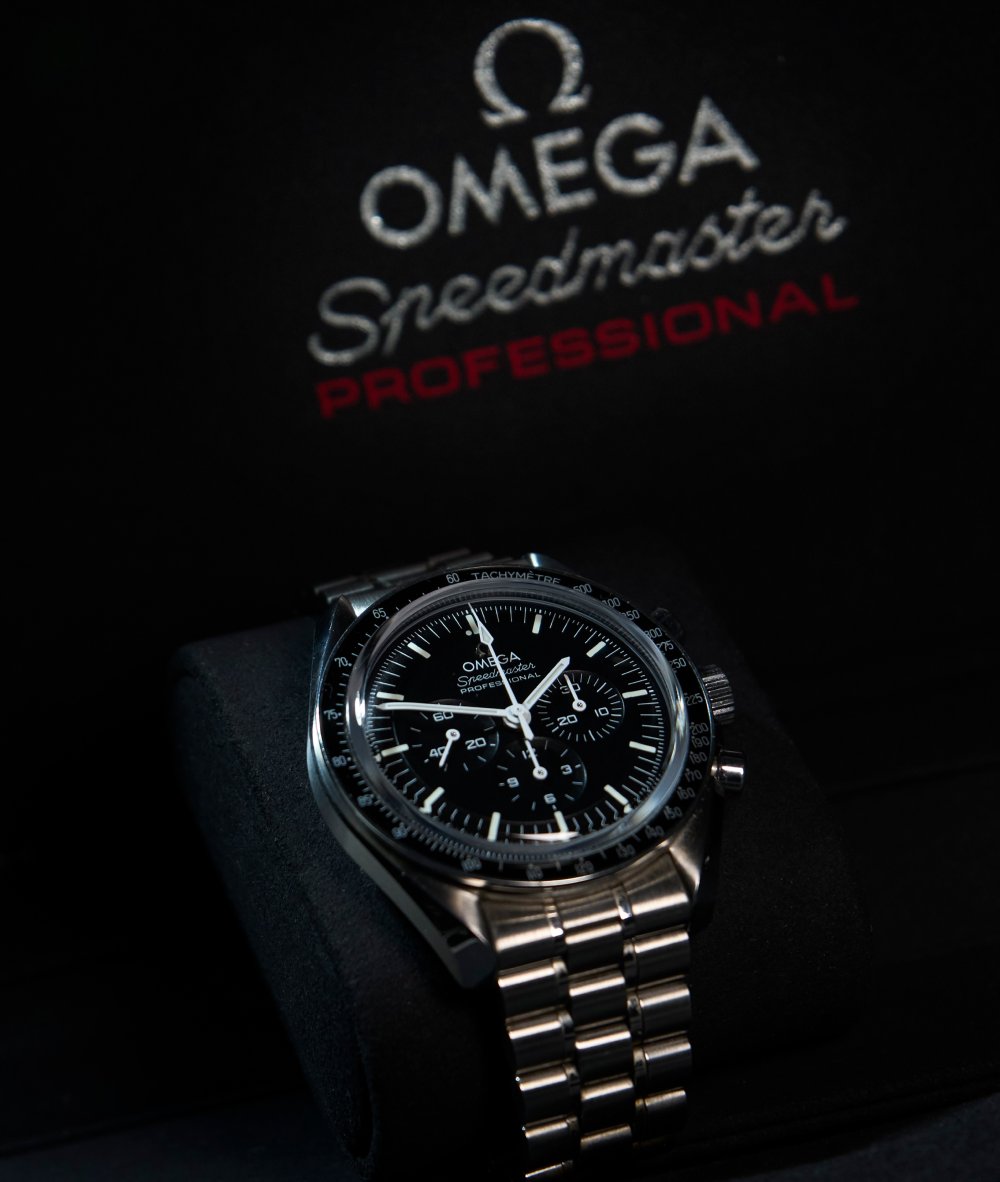
Packaging and documentation of real Omega watches
The original packaging and documentation that come with your Omega can provide valuable insights about the watch’s origin and authenticity.
The box should showcase the logo and branding, and the documents inside (such as the warranty card and instruction manual) should all follow Omega’s official templates.
Packaging that ticks all of the boxes is a good sign of a genuine Omega. But that’s not to say a watch without packaging and documentation is fake - the box and papers could have simply been misplaced.
Making sure you’re buying an authentic Omega watch
“Great deals” found on unreliable websites and online auction sites aren’t usually great at all.
Always buy an Omega watch from a reputable dealer, or you risk purchasing a damaged or fake watch, or a timepiece without a warranty.
Your authentic Omega timepiece should come with a warranty card containing the serial number, watch reference, purchase date, and the retailer’s details. A watch retailer will be able to tell you if the model corresponds with your watch’s serial number - an important indication of authentication.
Book an authenticity check
Take your Omega to a professional who can determine whether it’s real.
At Trilogy Jewellers, we have first-hand knowledge and years of experience dealing with Omega watches, which means we can tell if your Omega is fake. Whether you’re a first-time buyer or are expanding your collection, make sure you’re adding value - not a dud - to your portfolio.
TRILOGY ON YOUTUBE
Follow Trilogy on YouTube for regular updates and reviews of luxury watches and jewellery.
